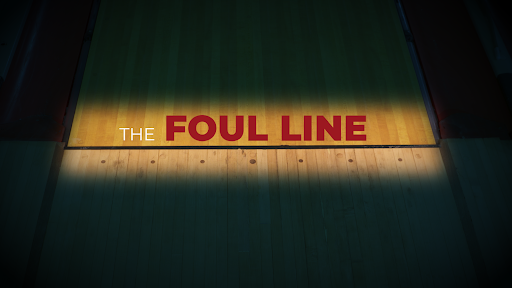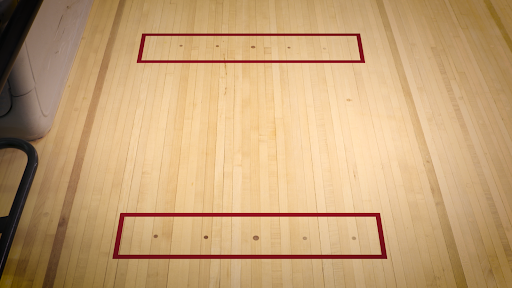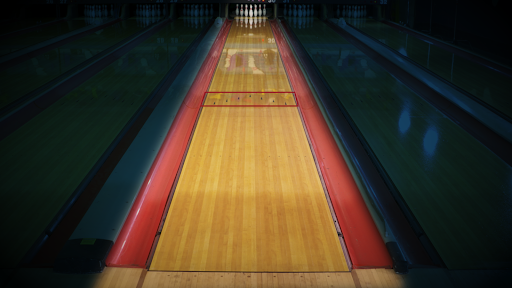
The Bowling Lane 101
Scott PohlUnderstanding the playing field in bowling will lead to higher scores and better overall performance. In this free video, Scott Pohl, owner of On Track Pro Shop, highlights two key areas beginning bowlers need to understand before throwing a bowling ball at pins.
The Approach
From the foul line back to where the back set of dots ends is known as the approach in bowling.
The approach is made up of two sets of dots and the foul line.
Everything that happens in the sport of bowling before the bowling ball rolls on the lane occurs on the approach.
If you take more steps or longer steps, the first set of dots towards the back of the approach is where you’ll want to set up. If you take shorter steps or fewer steps, the second set of dots (closer to the foul line) on the approach are for you.
The Lane
A bowling lane is 60 feet long. It is made up of either a wood or synthetic surface. Lane oil is applied in a pattern onto the lane to vary when and where the bowling ball hooks. There are different pattern lengths and oil volumes that give bowling a different invisible playing field every time you bowl.
The first set of dots on the lane are located about 8 ft. past the foul line. Some bowers use them to aim at or target when they release the bowling ball.
Fifteen feet past the foul line are the arrows. These are used more commonly for targeting. They are the biggest marking on the lane, which makes them easiest to see.
The dots on the approach correlate with the dots at the foul line, the lane, the arrows, and the pins.
The approach and the lane are made up of boards. They are counted in five-board increments and trace from the approach all the way down to the pins.
Understanding the playing field is the first step in learning how to bowl. Check out How To Bowl: Getting Started and our Spare Shooting library for great beginner instruction designed to improve your game.
Scott Pohl here. And coming I'm to you today, looking at all the different information that we have on the lane, where to begin. Let's take a look at the approach. We have dots on the approach. There's actually two sets.
There's a set of dots near the back end of the approach and more up towards the middle. Well, what do these tell us? Number one, if you take a lot more steps, you're gonna use the dots towards the back part of the approach, or if you have longer steps, you're gonna also use these dots. Vice versa, the dots closer to the foul line is better if you take less steps or if you actually have shorter steps. Let's move a little bit closer.
Well, we can see that there's actually dots that correlate the one to the backside of the approach up by the foul line. What does this help us with? Well, number one, it's gonna tell us if we drift one way or another and we can work on correcting that, or if we're walking in a straight line. What else do we have? Well, there's a foul line here.
We definitely do not wanna pass the foul line. Why is that? Well, we can get zero. Another thing that can happen if we pass the foul line, it's very good likely that you can fall and possibly injure yourself. Moving on.
Now, we see another set of dots. These are dots that are about eight feet past the foul line. Some bowlers use them for targeting. This helps them create a good ball path down the lane. Moving even further, roughly about 15 feet down the lane, we have arrows.
This typically is the most common used target on the lane. Why is that? Well, they're actually the biggest marking and the easiest to see. If we look, the dots behind the foul line correlate with the arrows, and actually, down the lane we're gonna look at it, correlate with the pins. They're all in five board increments.
So if we start from the right-hand side, being a right-handed player, the first dot is on the five board, which is in line with the first arrow, all the way down to the 10 pin. Next up, we have the 10 board, which is on the second dot, the second arrow to the six pin. Moving on, we have the 15 board, which is going to be on the third arrow to the three pin. And lastly, we have the middle dot or a lot of places it's the biggest dot on 20 board, to the middle arrow, to the head pin.







The pins are not positioned exactly on the 15-, 10-, or 5-boards. The pins are positioned in corners of 12-inch equilateral triangles, so pins 3, 6 and 10 are centered 6, 12, and 18 inches from the center of board 20. However, a 41.5-inch wide lane has boards 41.5/39=1.064 inches wide, so the "corresponding" boards are centered 5.32, 10.64, and 15.96 (not 6, 12, and 18) inches from the center of board 20. Therefore, for example, the 7 and 10 pins are actually more than 2 inches outside the center of their "corresponding" boards on a 41.5-inch lane. I'm not sure how much of a problem this discrepancy is, in practical terms, but I think it should be recognized. Someone aiming at the 5-board may think he has a 6.7-inch margin of error (sum of the radii of the ball and pin), but in actually it's more like 4.7 inches.